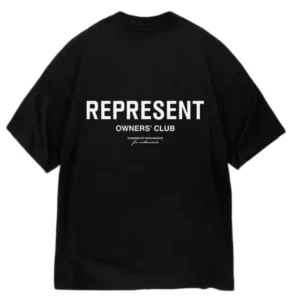what is Body cosmetics:
Since the beginning of civilization, many people have used cosmetics as part of their regular body care routine. Due to their distinct physicochemical properties, the various metal oxides and their nanoparticles are used in sunscreen and cosmetic formulations in this chapter. The use of metal oxide nanoparticles in cosmetics and the effects they have on the body are shown in a collection of the most recent updates. The chapter also discusses how the production of reducing reactive oxygen species (ROS) in skin cells is the mechanism by which metal oxides are absorbed by the dermis. However, in order to assess the risk and enable the cosmetics industry to carry out standard safety measurements, some toxic effects of metal oxides are addressed.
Farmamy is an online pharmacy (Farmamy è una farmacia online) where you can get all types of cosmatics items.
Harmful Effects of Cosmetic Chemicals:
1. Sulfates:
Sulfates are salts produced when another chemical and sulphuric acid (H2SO4) react. Petroleum and plant sources like palm and coconut oil are also used to make them. They are used for lathering because they act as surfactants. The skin and eyes can be irritated by sulfates. They might remove dye from your hair too early. Due to potential threats to the environment, their use is also the subject of ongoing debate [1].Getting them from regular sources like palm oil is causing the annihilation of rainforests. They can be harmful to aquatic species if they are washed away.
2. Parabens:
Preservatives called parabens are used to keep makeup and skincare products fresh and free of germs [2].They can be found in cosmetics, lotions, soaps, and other items. They disrupt reproductive and brain function and lead to an increase in the production of estrogen, the female sex hormone. According to some studies, parabens enter the skin and mimic estrogen, which causes excessive breast cell division. Breast cancer eventually results from this.
3. Phthalates:
Phthalates are plasticizing chemicals or salts that are used to spread a product [3].Some examples include lotions, nail polish, and perfume. They are toxins that harm development and reproduction and are also used as softeners in shampoos.
4. Artificial colors:
Petroleum or coal tar are the sources of synthetic colors .Hydrocarbons, carbon, and water make up coal tar. It has a distinctive odor and is a dark, viscous, thick liquid. Have you been looking for lipsticks with a lot of pigment? Consider the ingredients that go into these pigments now. The likelihood of higher coal tar percentages increases with pigment weight. Additionally, numerous commercially available eyeshadows contain coal tar. Colors made from synthetic materials can irritate the skin, lead to cancer, clogged pores, and ADHD (attention deficit hyperactivity disorder).
5. Fragrance:
Products for the skin, such as perfumes, moisturizers, shampoos, cleansers, and conditioners, contain scents. They are made with chemicals that can cause respiratory problems, allergies on the skin [5], dermatitis, and problems with the reproductive system.
6. Triclosan:
Triclosan is a chemical that can be found in deodorants, antibacterial soaps, and toothpaste tubes. It is an endocrine disruptor and an irritant to the skin, but it is also effective against microbes [6] (anti-bacterial in nature).According to some studies, triclosan can cause intestinal inflammation and tumor growth in mammals. Since triclosan breaks down slowly, it is thought to pose a risk to the environment. Triclosan, like sulfates, is harmful to aquatic life.
7. Toluene:
The majority of nail polish and hair dyes contain toluene, a petrochemical solvent [7].They may pose a threat to your immune system, increase your risk of birth defects, and increase your risk of blood cancer. If you are a pregnant woman, you should avoid using nail polish and hair dye because they can harm the developing fetus. Toluene has the potential to have an effect on the human central nervous system, which can result in drowsiness, fatigue, headaches, and nausea.
8. Talc:
Do you recall how supple talcum powder felt? This is due to the fact that talc is the softer mineral that occurs naturally. Talc is primarily found in baby powders, eye shadows, blush, deodorants, and some soaps. It is used to absorb moisture. Talc, has a direct link to ovarian cancer [8].When a woman who had been using Johnson & Johnson’s talc for 35 years died of ovarian cancer, the issue first became a concern. Talc can cause lung tumors if breathed in.
9. Lead:
Lipstick, eyeliners, foundation, and whitening toothpastes all contain lead. Although lead is a significant contaminant in lipstick colorants, it is not directly added to lipsticks. Love wearing lipstick to work each and every day? We also do! Furthermore, we required this reality check! The earth’s crust naturally contains lead, a heavy metal. Lead is already present in sufficient quantities in our food, water, and air. Cosmetics are regulated by the Food and Drug Administration (FDA), which ranges from 0 to 20 parts per million (ppm).
10. Preservatives in Sunscreens:
Sunscreens contain substances like PABA, benzophenone, oxybenzone , methoxycinnamate, and homosalate. They are thought to absorb light, but rather than protecting the body, they do more harm. These chemicals in sunscreen are endocrine disruptors.
11. PEG (polyethylene glycol):
Shampoos, lotions, and sunscreens all contain PEG, which thickens them. It may result in respiratory problems and cancer. It can likewise take off the regular oils (sebum) from your skin and trigger the sebaceous organs (oil-creating organs) to make more sebum that can make the skin oily.
12. Formaldehyde:
In skincare, formaldehyde is frequently used as a preservative. It is a colorless gas that is used to stop bacteria from growing. Formaldehyde can be found in nail shines, hair transplantation treatment in hyderabad, hair gels, nail hardeners, shampoos, antiperspirants, salves and cosmetics. It is linked to neurotoxicity, asthma, hair loss, burns to the scalp, and developmental toxins. Formaldehyde can cause suffocation and dizziness when inhaled.
Shampoos, body washes, and foaming cleansers are our favorites. Do we not? However, are you aware of the component that contributes to foaming? Triethanolamine is it. Body washes, shampoos, cleansers, and bubble baths typically contain it as a foaming agent. It is a respiratory toxin and causes cancer.




